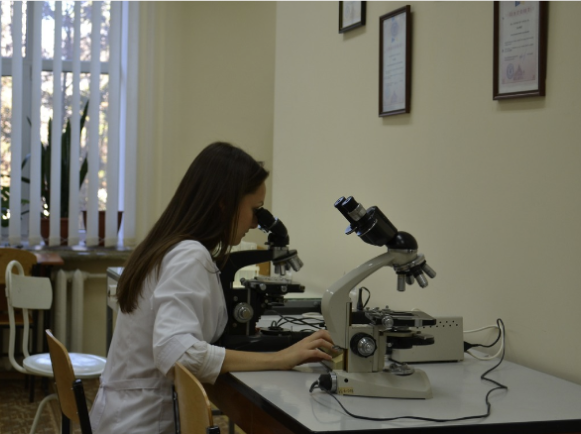Development of a Rapid Indicator of Water Toxicity
The rapid toxicity indicator is based on a modification of the biotesting methodology for Daphnia magna Straus.
The presence or absence of water toxicity is determined by the survival rate of daphnia. The criterion for toxicity is the death of 50% or more of daphnia in the test water compared to the control at a bioassay duration of up to 48 hours.

The EIT is a portable device that contains a single tripod containing 12 display vessels, a stem, a flashlight, a magnifying glass, an oximeter, a pH meter, a TDS meter and spare parts.
Biotests are affordable and inexpensive (when using modifications specially designed for practical needs), do not require special training and can be easily mastered in practical laboratories. The biotesting procedure is carried out without any special expensive equipment and reagents.
.png)
The results of biotesting can serve as signal information about the hazard of wastewater for aquatic biocenoses, which is used together with data on their component composition, thus providing feedback between the subject and the object of pollution.
The purpose of modernisation and implementation of the EIT is to provide the educational process with the latest devices of its own design with the possibility of further implementation of the development in production for economic benefit (effect) by V. N. Karazin Kharkiv National University.
In educational institutions, the EIT can be used for practical training of students or schoolchildren.
The upgraded rapid water toxicity indicator (RWTI) can be used in the field to:
- Identification of the most environmentally hazardous sources of toxic substances in water bodies;
- Detection of emergencies in water bodies caused by volley or emergency discharges of toxic substances; monitoring of changes in the toxicity levels of environmentally hazardous waste water during its discharge into a water body;
- Determining the level of water pollution in water bodies with toxic substances;
- Equipping the units of the Ministry of Emergencies and the Armed Forces of Ukraine with modernised EITs to determine possible toxicogenic contamination of surface and groundwater.
.png)
Modernisation of the rapid toxicity indicator will allow:
- Carrying out ecological and toxicological studies of natural objects (surface, ground, drinking water) and sources of their pollution with environmentally hazardous toxic substances (return, storm, discharge, mine water, household and industrial waste, etc.) with the involvement of students of the Institute in active research activities;
- Conducting educational, industrial practices and practical classes, within which students perform laboratory experimental work – toxicological analyses of samples taken in the course of research of relevant natural and anthropogenic objects in order to acquire skills and abilities for the preparation of high-level qualification papers and scientific works;
- Scientific supervision of students' preparation of qualification projects, providing them with methodological and practical assistance by organising experimental work on the basis of the laboratory to determine the toxic, genotoxic and phytotoxic properties of the relevant research objects;
- Performing research works, economic contracts and other orders that are not prohibited by the current legislation of Ukraine, providing various institutions and individuals with paid services for all types of work in accordance with the field of certification of the laboratory.
.png)
Contact person
Hanna Titenko
Director of the Education and Research Institute of Ecology
Candidate of Geographical Sciences, Associate Professor
Phone: +380 (57) 707-53-86, +380 (57) 705-09-66
E-mail: titenko@karazin.ua


